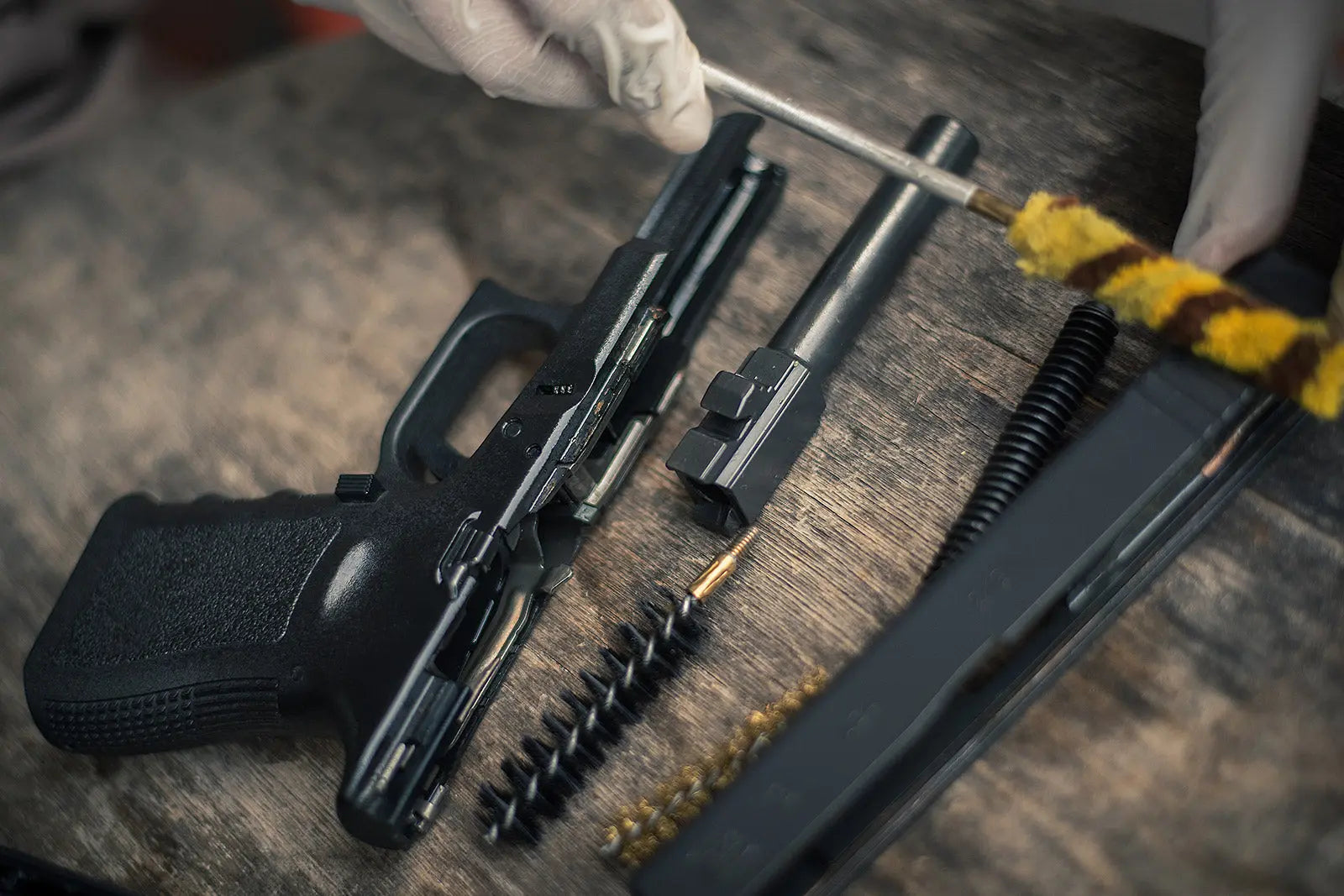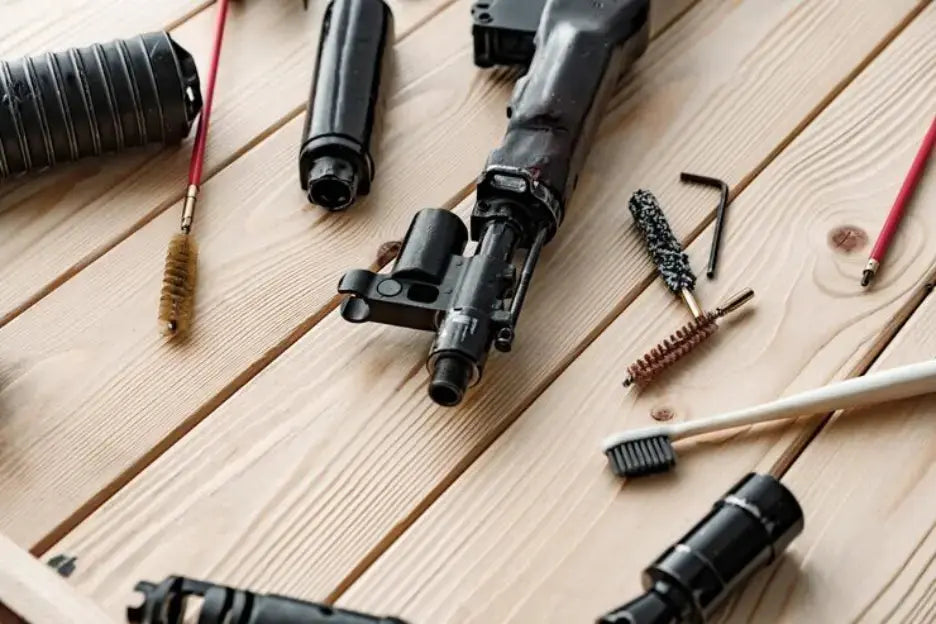Owning a firearm comes with the responsibility of ensuring it functions reliably and safely. Gun lubrication and cleaning are integral to this process, playing a crucial role in maintaining your weapon's performance and longevity. Whether you're using an AR-15, a rifle, or a 9mm handgun, understanding the nuances of firearm care will help you keep your equipment in top condition. You should also get a good firearms cleaning kit from GuardTech Plus.
The Importance of Lubrication in Firearm Maintenance
Proper lubrication is essential for the smooth operation of any firearm. It reduces friction between moving parts, minimizes wear and tear, and helps prevent rust and corrosion. A well-lubricated firearm ensures that all components move seamlessly, which is vital for maintaining accuracy and reliability. Without adequate lubrication, parts can grind against each other, leading to increased wear and the potential for malfunctions. This is particularly critical in environments where moisture and debris are prevalent, as these conditions can exacerbate the risks of rust and corrosion. By applying the right lubricant, you create a protective barrier that shields metal surfaces from the elements, thus prolonging the life of your firearm. Regular lubrication not only enhances performance but also provides peace of mind, knowing that your firearm will function correctly when needed.
Different Types of Lubricants for Firearms
Firearm lubricants come in various forms, including oils, greases, and dry lubricants. Oils are commonly used for general maintenance, providing a thin protective layer on metal surfaces. Greases, being thicker, are ideal for parts that experience heavy friction, such as slide rails and bolt assemblies. Dry lubricants, often made from substances like Teflon or graphite, are excellent for dusty environments since they don't attract dirt and debris. Each type of lubricant has its specific use cases, making it essential to select the right one for your firearm. For instance, while oils are versatile and easy to apply, greases offer superior staying power on high-friction components. Dry lubricants provide a clean, non-sticky option suitable for conditions where traditional oils and greases may falter.
Lubricating the AR-15
The AR-15 is renowned for its modularity and versatility, making it a favorite among firearm enthusiasts. For optimal performance, focus on key components such as the bolt carrier group, charging handle, and fire control group. Begin by disassembling these parts according to the manufacturer's guidelines. Apply a light coat of high-quality oil to the bolt carrier group, ensuring that the areas experiencing the most friction are adequately covered. The charging handle also benefits from a light oil application to facilitate smooth operation. For the fire control group, a minimal amount of oil should be applied to the moving parts to ensure reliable function without attracting excessive debris. Remember, less is more when it comes to lubrication; over-lubrication can lead to the accumulation of dirt and grime, which can impair performance. Regular maintenance and proper lubrication will keep your AR-15 in peak condition, ready for any situation.
Proper Lubrication for Rifles
Rifles, whether bolt-action or semi-automatic, require targeted lubrication to ensure both accuracy and reliability. Pay special attention to the bolt assembly and trigger mechanism, as these components experience significant friction. Start by using a high-quality oil to coat the bolt, focusing on areas where metal-on-metal contact occurs. For the bolt lugs, a small amount of grease can provide additional protection against wear. The trigger mechanism should be lightly oiled, ensuring smooth and consistent trigger pulls.
When dealing with semi-automatic rifles, it's also crucial to lubricate the gas system. Apply a thin layer of oil to the gas rings and key, as well as the operating rod if your rifle has one. This will help maintain the rifle's cycling efficiency and overall performance.
Always refer to your rifle's manufacturer guidelines to determine specific lubrication points and recommended products. Avoid over-lubrication, as excess lubricant can attract dust and debris, which may compromise the firearm's function. Regularly inspect and clean your rifle, paying close attention to the lubrication status of critical components. By doing so, you'll ensure that your rifle remains in optimal condition, ready for precise and reliable performance.
Maintaining 9mm Handguns with the Right Lubricants
Lubricating 9mm handguns is essential to maintain their functionality and longevity. Start by focusing on critical components like the slide rails, barrel, and recoil spring. After thoroughly cleaning these parts to remove any residue, apply a light coat of high-quality oil to the slide rails. This will help ensure smooth operation and reduce friction between the slide and frame.
Next, turn your attention to the barrel. A thin layer of oil applied to the exterior of the barrel can prevent rust and corrosion, while also minimizing wear. The recoil spring, which absorbs the energy from firing, should also be lightly oiled to maintain its elasticity and prevent binding.
For the internal components, including the trigger mechanism, a small amount of oil can be applied to moving parts to ensure smooth and reliable function. Be mindful of not over-applying lubricant, as excess oil can attract dirt and debris, potentially causing malfunctions. Always refer to your handgun’s manual for specific lubrication points and recommended products.
Regularly inspect and maintain your 9mm handgun, especially after prolonged use or exposure to adverse conditions. By following these steps and using the right lubricants, you can ensure your handgun remains reliable and ready for use in any situation.
How to Apply Lubricants Effectively
Applying lubricants effectively is crucial for maintaining the performance and reliability of your firearm. Start by disassembling your firearm according to the manufacturer's instructions. Cleaning each component thoroughly beforehand is essential; any residue left can affect the lubricant's performance.
Once the parts are clean, use a clean cloth or brush to apply the lubricant evenly across the surfaces. Focus on areas with significant metal-on-metal contact. For oils, apply a thin layer to moving parts like slide rails, bolt assemblies, and trigger mechanisms. Greases should be used sparingly on high-friction areas, such as slide rails and bolt lugs, to provide long-lasting protection. Dry lubricants are best applied to components in dusty environments where traditional lubricants might attract debris.
Be mindful of not over-applying lubricants. Excess lubricant can attract dirt and grime, leading to potential malfunctions. Instead, apply just enough to create a thin, even coating on the necessary parts. Use tools like cotton swabs or small brushes for precision application, especially in tight spaces.
After applying the lubricant, reassemble your firearm according to the manufacturer's guidelines. Cycle the action a few times to ensure the lubricant is evenly distributed and the firearm operates smoothly. Regular inspection and maintenance, combined with proper lubrication techniques, will keep your firearm functioning reliably.
Troubleshooting Common Lubrication Issues
Lubrication issues can still occur even with regular maintenance. Common problems include over-lubrication, which attracts dirt and grime, leading to buildup and potential jamming. If you notice that your firearm is accumulating excessive residue, it might be a sign that you’re using too much lubricant. To resolve this, clean the affected areas thoroughly and reduce the amount of lubricant you apply.
Under-lubrication is another frequent issue, causing increased friction and accelerated wear on moving parts. If your firearm is not cycling smoothly or you see visible wear marks on the metal surfaces, it could indicate that you need to apply more lubricant. Focus on the high-friction areas, such as slide rails and bolt assemblies, ensuring they have a sufficient but not excessive coating.
In some cases, the type of lubricant used might not be suitable for the specific conditions or firearm type. For instance, using oil in a dusty environment can attract particles that impede functionality. Consider switching to a dry lubricant in such scenarios to prevent dirt buildup.
Regularly inspect your firearm for signs of inadequate lubrication, such as unusual noises, increased resistance when operating the action, or visible wear marks. By addressing these issues promptly, you can maintain the reliability and performance of your firearm. Always refer to the manufacturer’s guidelines to ensure you're using the correct type and amount of lubricant for your specific model.
Cleaning Before Lubricating: A Necessary Step
Cleaning your firearm before lubricating is essential for maintaining optimal performance. Residue from shooting, such as carbon, copper, and lead deposits, can accumulate over time, potentially impairing functionality. To begin, use a high-quality gun cleaning solvent to remove these residues thoroughly. A good solvent will break down and dissolve any build-up, making it easier to wipe away. After applying the solvent, use brushes and patches to scrub the interior and exterior surfaces of your firearm. Pay special attention to hard-to-reach areas and moving parts where residue can easily accumulate. Once you've cleaned the firearm, conduct a thorough inspection to check for any signs of damage or excessive wear.A clean firearm is ready for proper lubrication, ensuring that the applied lubricants can effectively do their job. By cleaning first, you prevent contaminants from interfering with the lubricant, which helps maintain the firearm's performance and longevity. This step is crucial for ensuring that your firearm operates reliably and safely, no matter the conditions.





